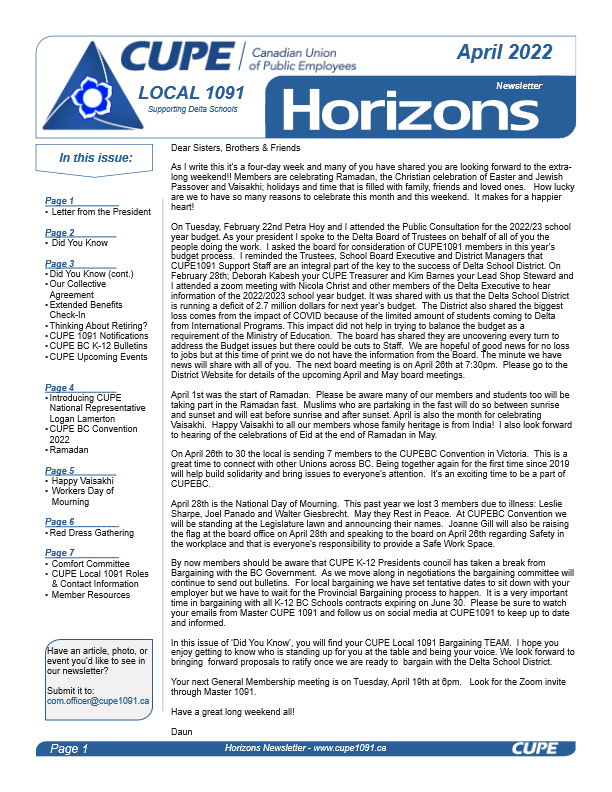
With summer upon us, the K-12 Presidents Council would like to thank all school support workers for their exemplary service through another challenging school year. As the pandemic continues, your dedication and professionalism are to be commended.
Thanks to your work, students and families have been able to depend on clean and healthy schools being open and providing high quality public educations throughout this school year.
Bargaining update
We of course also thank you for your solidarity and support as we’ve been bargaining with the B.C. Public School Employers’ Association towards a renewed provincial framework agreement. We thank everyone who helped guide our bargaining priorities by taking part in our provincial bargaining survey, and for all the work being done at the local level to mobilize our members towards fair collective agreements. We also thank our provincial bargaining committee, and all of the local bargaining committees too, for their hard work and dedication.
We remain committed to continuing our bargaining with the BCPSEA. We recently scheduled dates for a return to provincial bargaining – September 13-15, 2022.
We remain hopeful a provincial framework agreement centred on a fair wage settlement can be reached that reflects the value and importance of our work to students, families, and communities.
In the meantime, K-12 locals are encouraged to continue preparing for local bargaining and building member mobilization efforts in support of our bargaining committees. CUPE continues to work closely with our union allies to achieve fair contracts for all public sector workers, who have been on the frontlines serving our province every day throughout the pandemic.
New video highlighting our work
The K-12 Presidents Council is also pleased to be releasing a new video highlighting the work our members do in school districts across the province. Produced with support from the national union, this 2-minute animated video shows the many crucial jobs our members do, and how important they are to providing quality public educations for students in B.C.
You can watch this new video on our website bcschool.cupe.ca, and on our social media channels – @CUPEK12BC. Please share this video in your communities.
Radio ads
During June, the K-12 Presidents Council has been running radio ads throughout B.C., shining a light on the invaluable work our members do in communities across the province. The radio ad, being carried in every community with a local represented in the K-12 Presidents Council, highlights the crucial role school support workers play for students and families, and the challenges facing our members.
You can hear the ad on your local radio stations, and it is posted on our Facebook page – facebook.com/CUPEK12BC. Please share with your family, friends, and neighbours.
View PDF.


